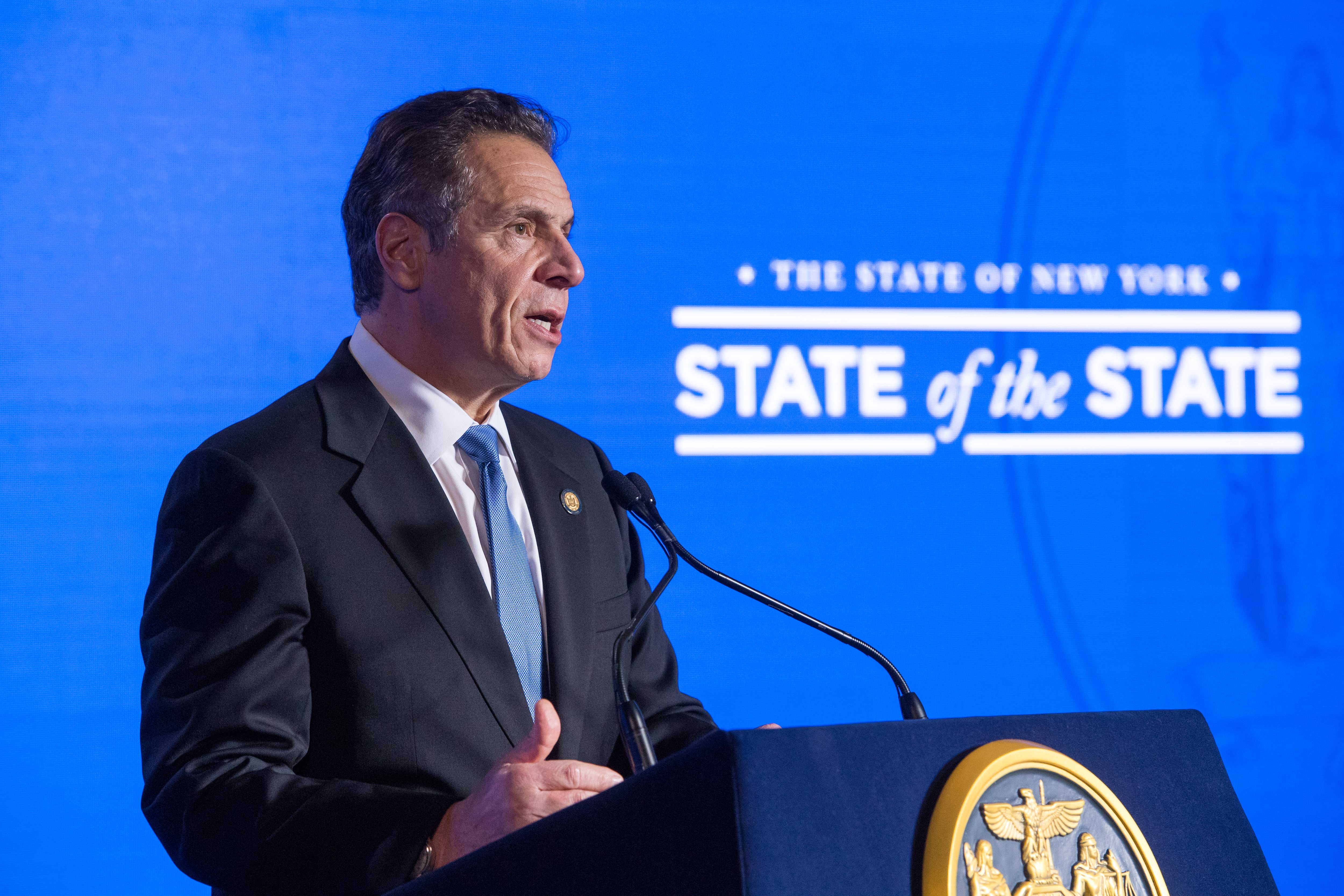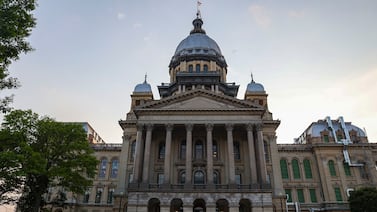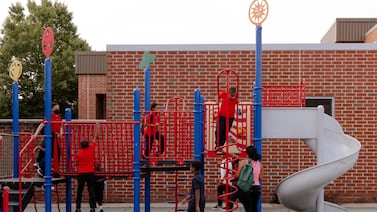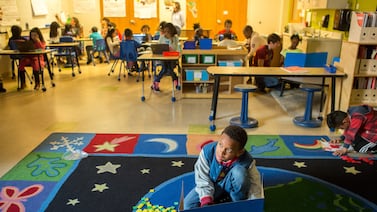To address inequities related to remote learning, Gov. Andrew Cuomo wants to cap monthly internet fees at $15 for low-income New York families, he said Tuesday.
He also wants to establish a “hardship” fund to cover internet costs for low-income K-12 students who cannot afford service for the remainder of the pandemic. His office did not immediately disclose details on how much this would cost or who would qualify.
The governor’s remarks came during his second of four virtual State of the State speeches this week, outlining new proposals for the year ahead. So far, both speeches have largely left out education or school reopening.
But on Tuesday, Cuomo said he plans to propose legislation limiting internet company fees because it was critical that New Yorkers have affordable connections to work, access telemedicine, and learn from home. His internet proposals, he said, were informed by his Reimagine New York Commission — launched to find ways to close the digital divide, increase access to healthcare, and improve employment as New York recovered from the pandemic.
A basic high-speed plan costs, on average, more than $50 a month, raising equity issues, according to Cuomo.
“For many families, that is just not affordable,” the governor said. “In this new world, remote learning doesn’t exist if the child doesn’t have access, and too often the child left behind in remote learning is poor, Black or Latino.”
In November, in a letter to Mayor Bill de Blasio, New York City Comptroller Scott Stringer cited his own analysis that found internet companies charged city families an average $40 a month for the most basic internet plan.
Many families across New York City have struggled to find stable internet over the past 10 months, leaving students to use cell phones and paper packets. Many have been unable to log on at all.
The city’s education department purchased and delivered 450,000 internet-enabled iPads to families since last March. An estimated 100,000 of those were delivered this school year, as tens of thousands of outstanding device requests still remained unfilled this fall, leaving the city scrambling to purchase more iPads. While the city has met all outstanding requests from the fall, it expects to continue seeing requests because of broken or outdated devices that will need to be replaced, officials said.
When the pandemic gripped the city in March, some families attempted to access free 60-day service deals for new customers offered by Optimum and Spectrum but found they were not eligible because of past unpaid bills. That practice was reversed after Chalkbeat raised questions about it. Both companies are once again offering those 60-day deals this year.
Cuomo said his office will launch a “hardship fund” to pay for internet subscriptions on behalf of students who cannot afford internet during the pandemic. To establish the fund, Cuomo said his office is partnering with former Google CEO Eric Schmidt, who chairs the Reimagine commission, as well as Ford Foundation president Darren Walker, and Richard Parsons, chair of the Rockefeller Foundation, who also are members of the commission. (Parsons is also one of the key funders behind Education Equity Campaign, which is pushing to keep the Specialized High School Admissions Test.)
Valerie White, executive director of LISC NYC, a nonprofit that focuses on investment in historically underserved neighborhoods, commended the governor’s proposal as “a first step” to broadening internet access. White believes that more must be done at the city, state, and federal levels — including an investment in internet infrastructure — to ensure that every person has access to quality internet.
“We have a whole segment of our society that does not have any access at all or the access is not high speed, so what that does is, it cuts off that segment from participating in everyday life like everyone else does,” White said.
Other officials have proposed solutions to broadening internet access. Stringer, who is running for mayor, urged the mayor in November to subsidize internet for low-income learners. On the state level, Sen. Shelley Mayer, a Rochester Democrat who chairs the state senate’s education committee, has proposed charging telecommunications companies a fee that would be collected in a fund to cover internet costs for any K-12 student in New York.
John Bonomo, a spokesperson for Spectrum’s parent company, said Spectrum offers a $14.99 monthly deal for broadband service that does not have modem fees, data caps or contracts. That service is available to families who qualify for the National School Lunch Program and seniors who receive Supplemental Security Income.
Janet Meahan, a spokesperson for Optimum’s parent company, said Optimum offers a similar $14.99 monthly deal that, in addition to low-income families and seniors, is also available for K-12 and college students who do not currently have internet at home.
A representative for the New York State Telecommunications Association did not respond to a request for comment.
In addition to the difficulties many families have had with paying internet fees, students in homeless shelters have had to contend with lacking any infrastructure to connect to Wi-Fi. Despite prioritizing homeless students in their iPad distribution plans, the devices proved useless for many students in shelters because their buildings did not have WiFi and had spotty cellular connections to T-Mobile— which the iPads use to enable the internet. The city has promised to switch cellular connections for homeless students and equip every family shelter with Wi-Fi, but won’t complete that work until the summer. The city is being sued to speed up its Wi-Fi rollout at shelters.








